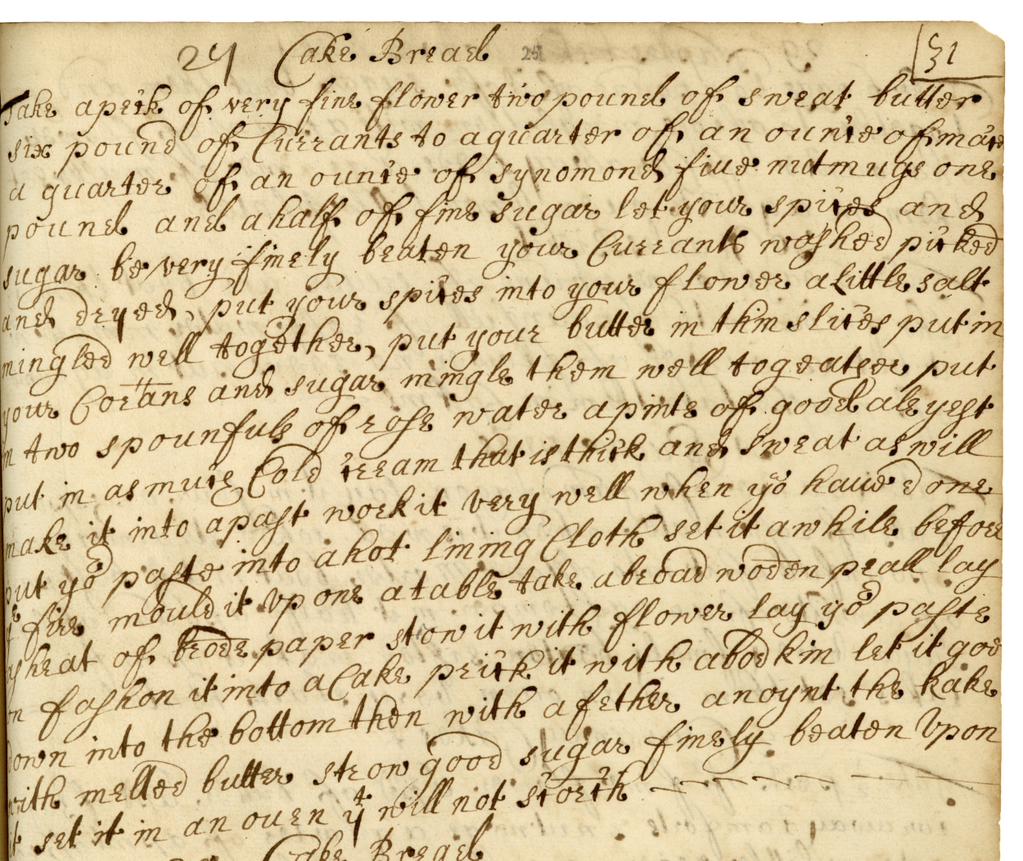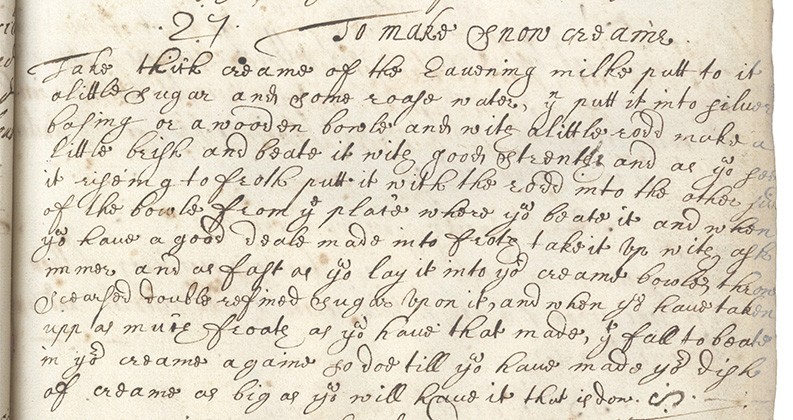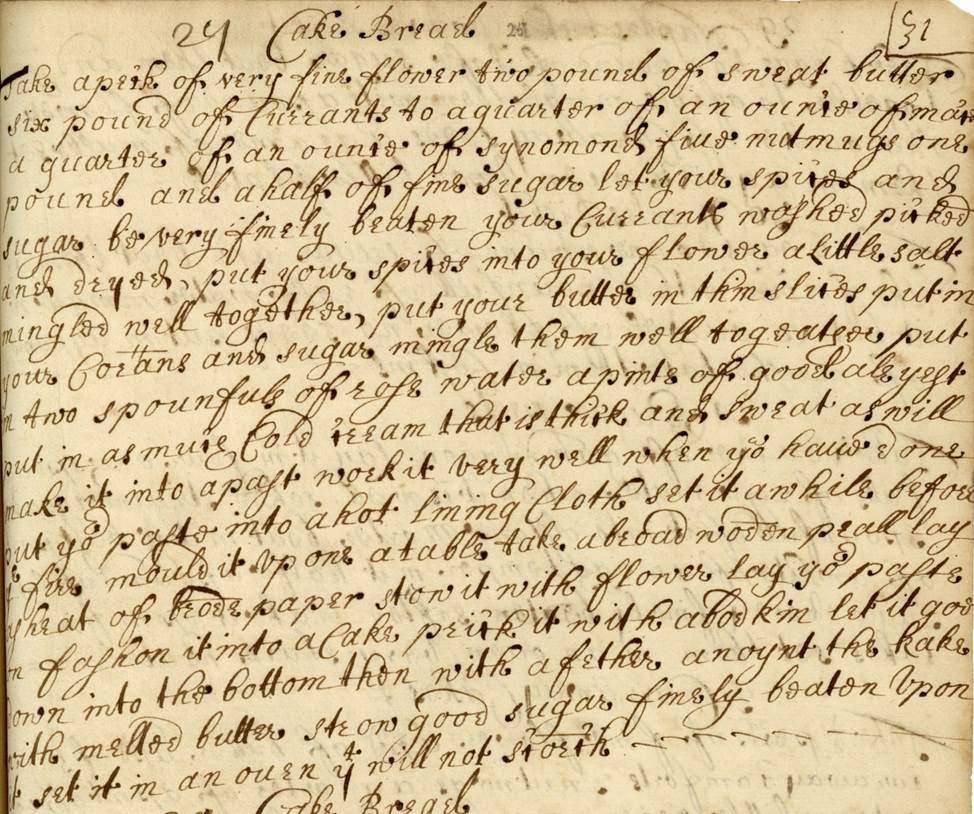A group of Year 9 (13-14 year old) students from Bedlingtonshire High School in Northumberland took part in a two day event inspired by a 17th century recipe from our Special Collections. As part of this ‘Use Your Loaf’ project, they baked and sampled bread from a recipe that, as far as we know, had not been used in over 300 years!

Misc Manuscripts 17th C recipe
Jane Lorraine’s recipe book, which was compiled between 1684-6, was adapted by the Food Technology students who transcribed the recipe for cake bread (similar to our modern day fruit loaf), interpreting the older spellings, letter formations, annotations and weights to create a recipe they could work with.
Next they visited the Chemistry Outreach Lab to gain an understanding of the science behind the chemical reaction of yeast and the impact that heat has on the effectiveness of yeast.

Students at NU
The following day they returned to have a go at baking both modern day bread and their newly discovered 17th century bread in NU Food – surprisingly finding more similarities than differences. The students remarked that the 17th century bread was indeed edible (as Library staff who sampled the bread baked by the education outreach staff will testify – (in itself a miracle if anyone knows our baking abilities!). They also did some food tasting and experienced the difference salt makes to the taste of bread before finding out about current University research on the benefits of various herbs and spices.
The primary purpose of the pilot was to work with the School of Agriculture, Food and Rural Development and the School of Chemistry on an outreach project with a widening participation school, which showcased the potential and breadth of University education to students from families with limited experience of higher education. One student remarked of the University that “it is a big interesting place” with many others commenting on how “it was different” and how they got to do “something we don’t usually do”, whilst a significant number remarked on how the visit made them more likely to consider applying to University. One student summed it up succinctly when asked what they would change about the visit: “nothing, it was brilliant”.

17th C bread
We hope to condense the pilot into a one day event which can be offered to other schools and to open up the project to other interested parties through the development of a libguide. Hopefully, more forgotten recipes that have not been baked for centuries will be revisited and eaten again.





